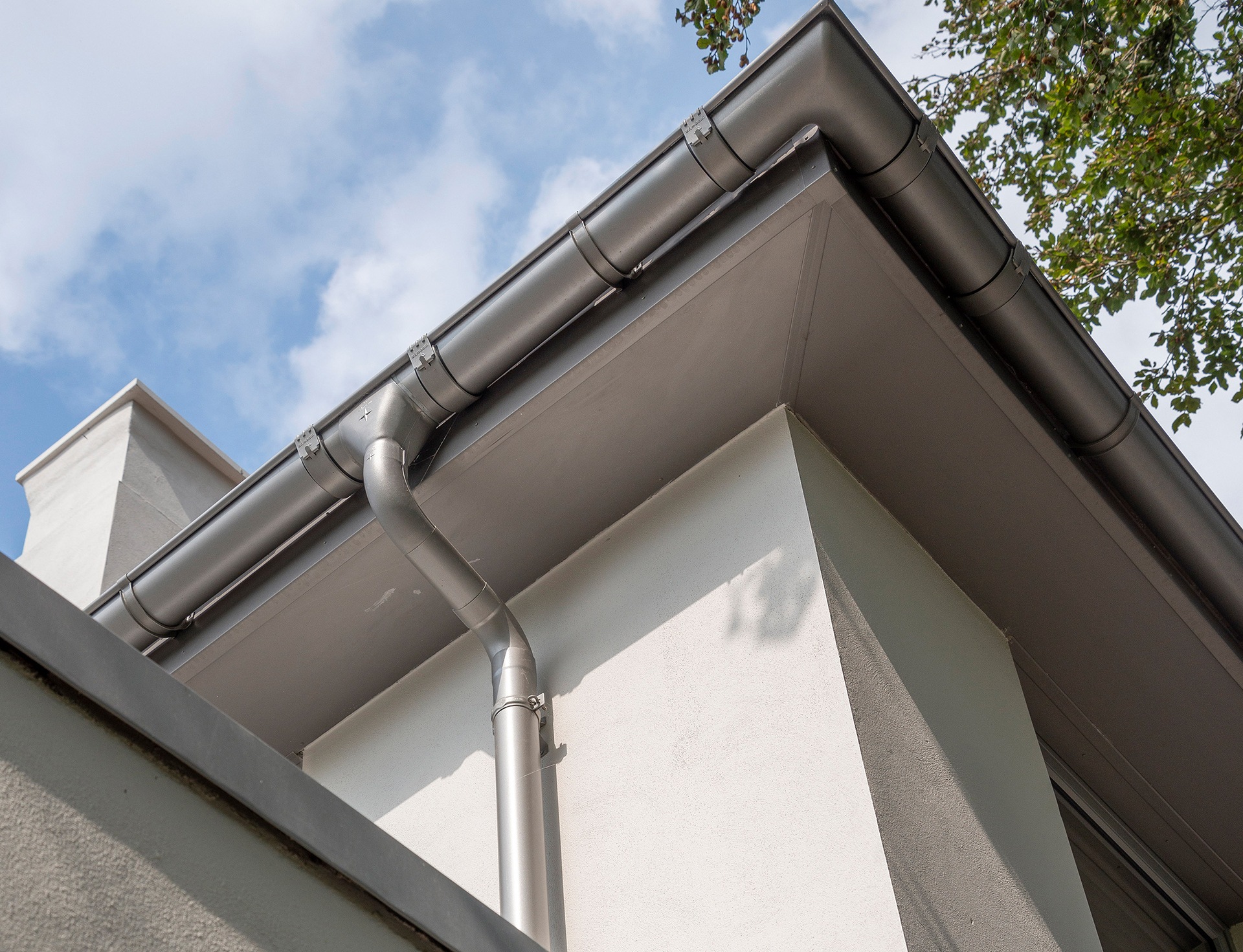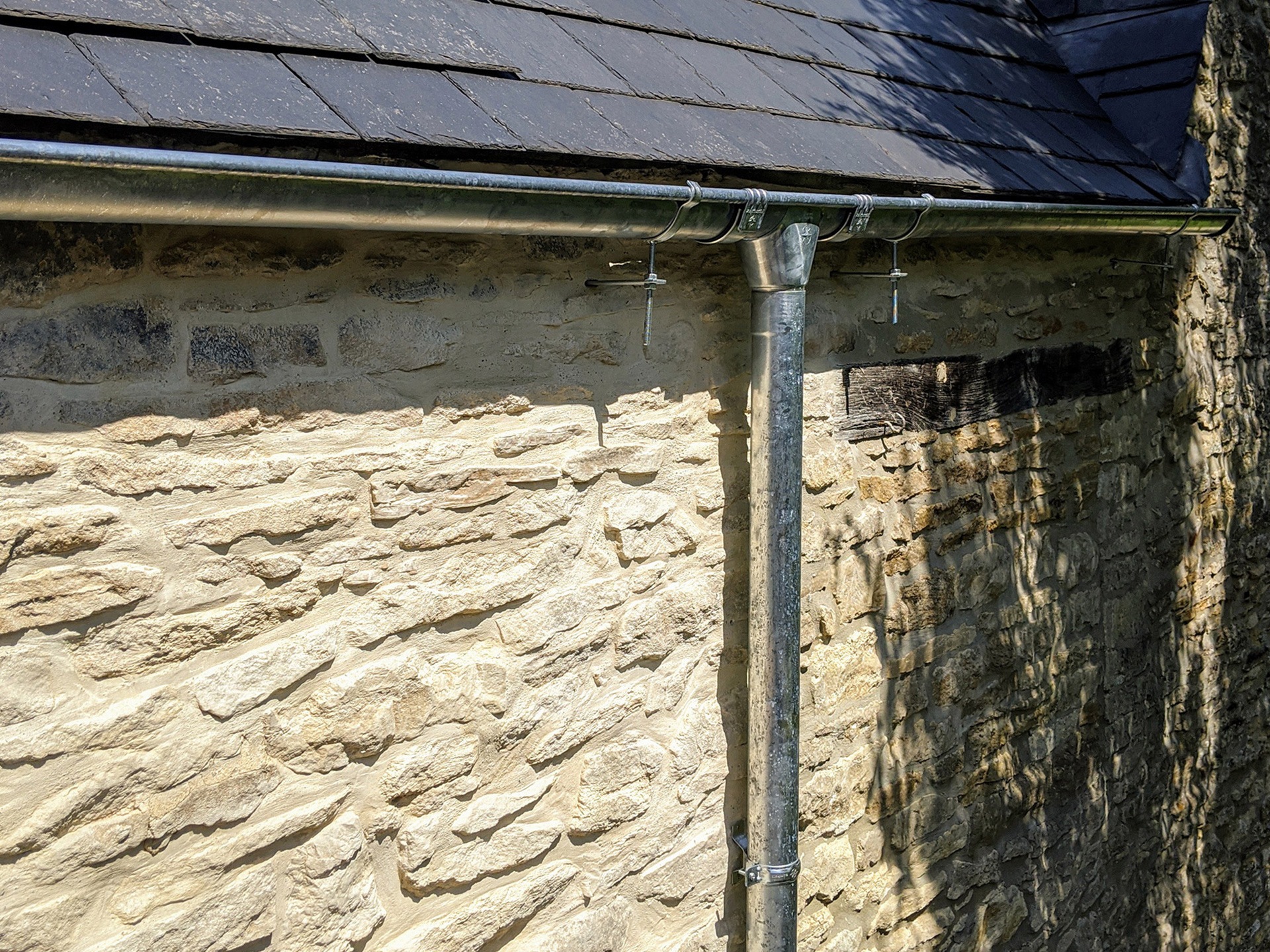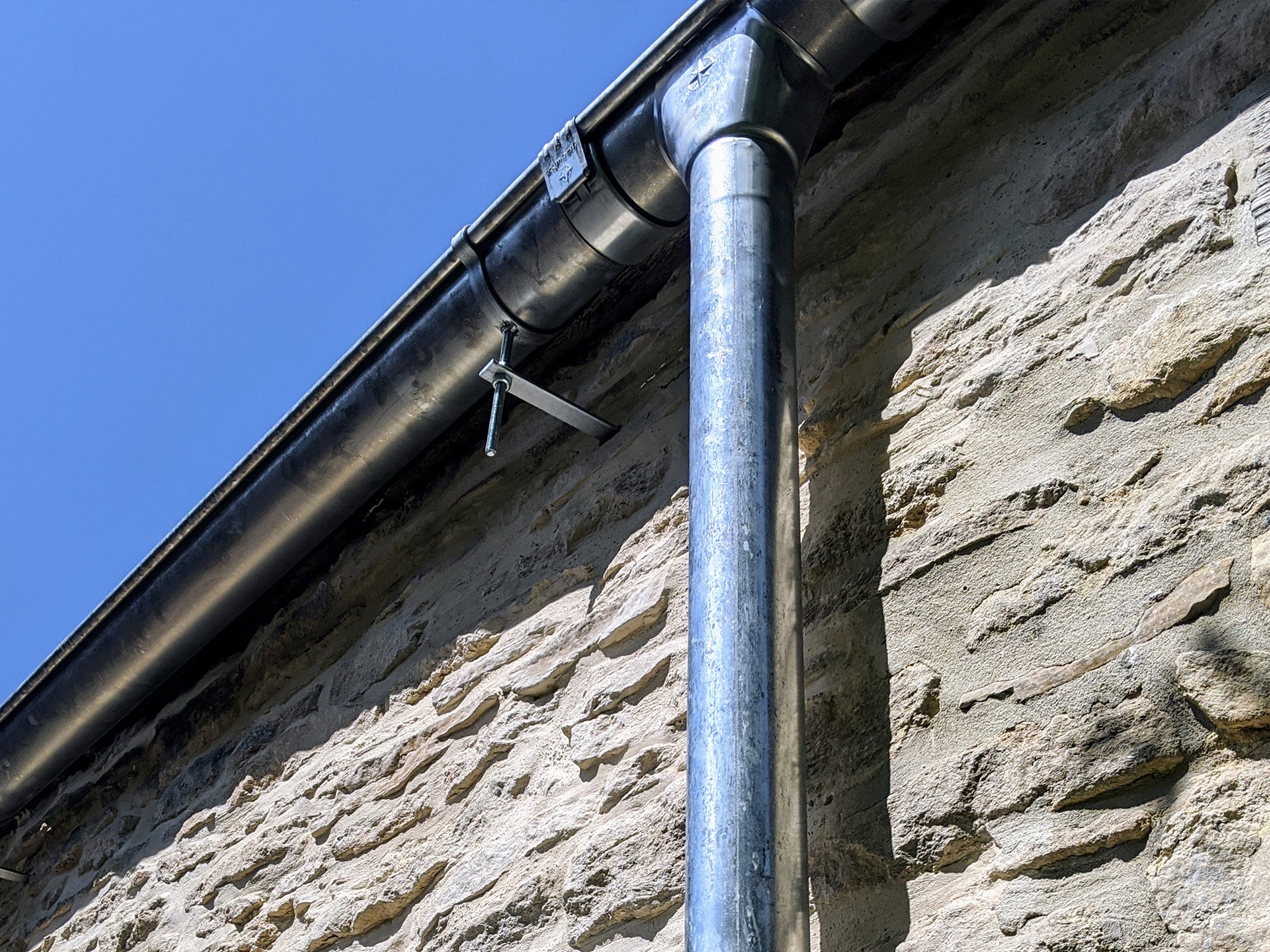How to clean your gutters: the definitive guide
Moss from the roof, fallen leaves and other debris can easily build up in guttering over time. While it’s easy to ignore your gutters, letting them get clogged up can cause costly problems in the long term. So here's how to keep them clean
Cleaning out your gutters is a job that it’s easy to keep putting off. But, it’s got to be done, because overflowing gutters can lead to penetrating damp and other serious structural problems. So, we talked to the guttering experts at Rainclear to get the definitive advice on how to clean out guttering.
What are gutters for?
The main purpose of guttering is to direct rain away from your house, but, if gutters become clogged, they can’t do this effectively. This means the water can overflow and run down the walls. And, over time, lead to penetrating damp, black mould, and crumbling brickwork.
Charlie McNeill, from Rainclear, which makes all kinds of seriously stylish metal guttering, tells us why clearing your gutter is so important, and how to stop your gutters clogging for good.
What are the dangers of clogged gutters?
McNeill says, “One of the biggest – and most expensive – potential consequences of blocked gutters is structural damage to the foundations of your home. If your gutters fail, water can spill down the side of your house and pool around the foundations.
Over time, this can weaken the structure of your house, and, in serious cases, could even lead to subsidence (where the foundations of your property begin to sink into the ground).
“Dealing with subsidence is expensive, with the average cost around £12,500. Depending on the severity, though, it can cost a lot more. Subsidence can also impact the future value of your home, and make it more costly to secure home insurance.
“Overflowing gutters can also lead to damp and mould inside your roof or on walls and ceilings, which could set you back around £300 to remove. Worse still, mould within the home can lead to health problems if left untreated. These can include nasal congestion, sneezing, red eyes and uncomfortable skin rashes. In serious cases, it can lead to severe respiratory infections and worsened asthma, especially in children and those who are sensitive to the allergens that moulds produce.”
Water running down an external wall from a broken or overflowing gutter can also cause penetrating damp. This is when water comes into a property laterally through the walls.
You might notice an interior wall feels damp or has water droplets appearing on it. Later signs could include staining and damp patches or even blistered plaster. If it’s caused by an overflowing or broken gutter, it should dry up once the problem is fixed.

Image credit: Rainclear
How to prevent clogged gutters
McNeill advises, “Your gutters might be the last thing on your to-do list, but for them to work effectively, regular maintenance is key.
Ideally, this should be done at least twice a year, but if you have lots of trees around your house, you might need to do it more regularly. Early winter is a great time to clean your gutters, as they’re likely to have become clogged with leaves after autumn.”
Hire the professionals
McNeill suggests, “Cleaning your gutter and inspecting your roof isn’t the easiest of jobs. If you’re not able to climb a ladder yourself or have safety concerns about doing so, you can always hire a handyman, cleaning company or professional roofing or gutter company to do the job.
“This might seem like a burden in terms of costs, but the consequences of not keeping your gutters well maintained could cost you significantly more down the line.
“Many local companies offer gutter maintenance and cleaning services. The professionals already have all the best equipment. They can spot any areas requiring repairs immediately, and, being well practiced, they are usually much faster (and safer).”

Image credit: Rainclear
How to clean out your gutters
McNeill continues, “If you insist on doing it yourself this is what we’d recommend:”
- To prevent damage to the guttering, never lean a ladder against the guttering itself. Instead use a ladder ‘stand-off’. And always have somebody ‘foot’ the ladder below you.
- Ensure gutters and downspouts are clear and free from any blockage. Using gloved hands or a gutter scoop, remove any leaves, gunk and debris from the gutters and drop them in a bag or bucket that you can easily carry down the ladder and get rid of appropriately afterwards. Don’t flush debris down the downpipe. But, once you’ve cleared out the dirt, it can be helpful to use a spray hose (working from the end of the guttering towards the outlet) to give the gutters a good rinse.
- For a downpipe that has been blocked (by debris flushed down through the outlet from the gutter), buy a drainage rod, available from most hardware shops, and push this through from above and out of the gutter shoe at the bottom.
- Finally, manually brush away any loose particles, general dust, dirt etc.
Rainclear has instructions for cleaning different kinds of gutter from aluminium to copper on its website.
Trim trees
McNeiill continues: “If your house is surrounded by trees, it means your gutters are likely to become clogged more frequently, as falling leaves can easily get caught in them.
A simple way to minimise the need for extra gutter cleaning is to trim the trees down as regularly as you can – especially those that hang over your gutters.
If at all possible, it’s best to keep your gutter at least 10m away from any overhanging branches.”
Install gutter guards
McNeill says, “While it’s still important to check your gutters regularly, installing gutter guards is a great way to stop leaves from getting into your gutters and causing major blockages. These sit inside your gutters to keep out leaves, moss and twigs, while letting water pass through.
They come in a range of different shapes and sizes, so make sure you buy one that’s suitable for your specific gutter. Hedgehog gutter guards are particularly easy to fit. You will still need to clean your gutters regularly, as most gutter guards can’t prevent smaller debris from slipping through, but it should make the job much easier.
“You could also install an access pipe piece in your downpipes, which allows you to easily get a rod into the downpipe if debris has been washed into it.”
Maintain your roof
McNeill concludes, “When it comes to maintaining your gutters, your roof has a part to play too.
Debris from an unmaintained roof – think moss, leaves, twigs and even roofing materials – can easily fall into the gutters and contribute to blockages.
Your gutters and your roof work together: a well maintained roof allows water to channel into your gutters; while clear and unclogged gutters effectively channel water away from your roof and property in general.
“Thankfully, cleaning out your gutters is also a great opportunity to check for any damage to your roof. And, if you spot any signs of damage or wear and tear, address the problem as quickly as you can.”
READ MORE:









